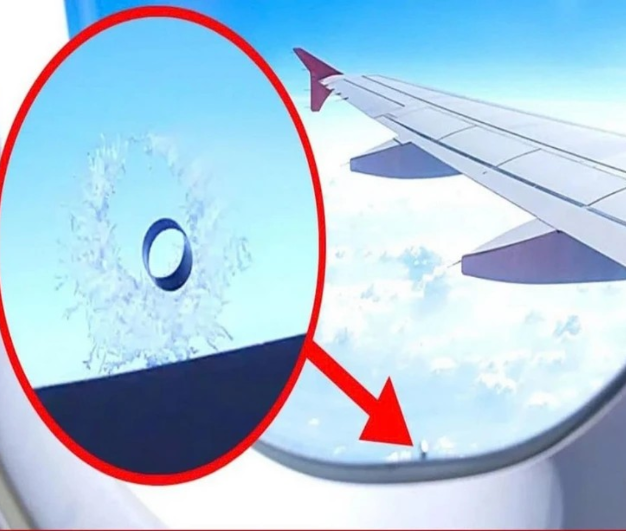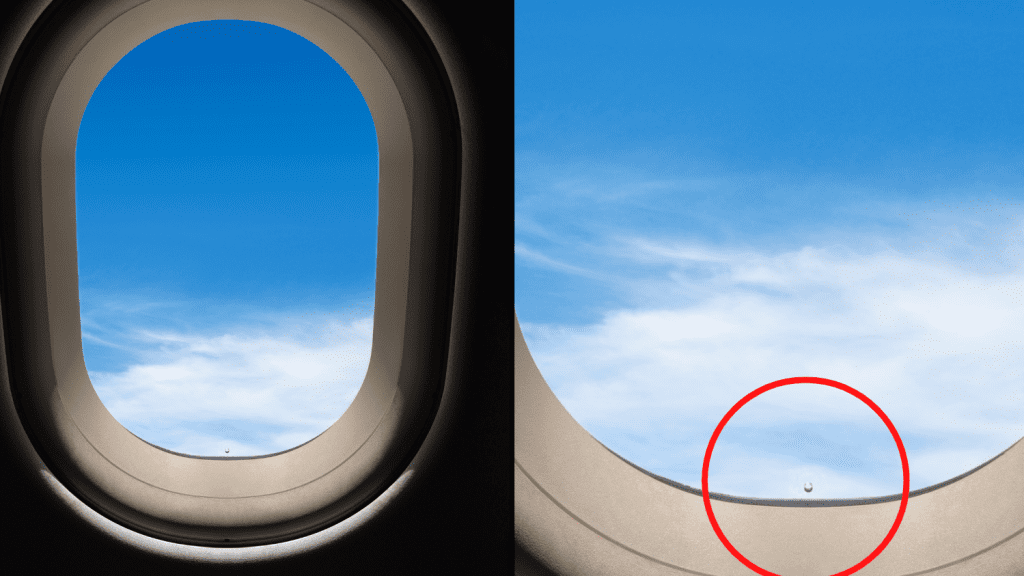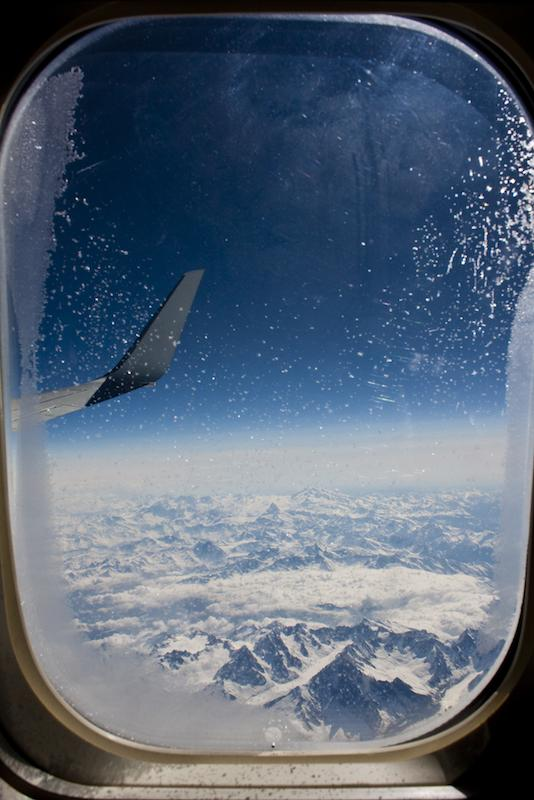Frequent flyers often claim a coveted window seat to enjoy the stunning views from thousands of feet in the air. But have you ever noticed the tiny hole at the bottom of airplane windows? It may seem insignificant, but this small, often-overlooked feature plays a crucial role in ensuring your safety during the flight.
The Function of the Small Hole in Airplane Windows

At first glance, a hole in an airplane window might seem alarming. After all, windows are supposed to be solid barriers between passengers and the extreme conditions outside. However, this tiny hole—known as a “bleed hole”—serves several essential functions that keep passengers safe and comfortable during flights.
Maintaining Cabin Pressure
One of the most important jobs of the bleed hole is to help maintain safe air pressure inside the cabin. As airplanes ascend, the outside air pressure decreases significantly, while the cabin maintains a pressure level comfortable for passengers. This difference in pressure creates immense physical strain on the airplane’s windows, especially at cruising altitudes of 30,000 feet or higher.
Balancing Pressure Between Window Panes
Airplane windows are designed with three separate panes: outer, middle, and inner. The bleed hole is located in the middle pane. Its primary function is to balance the air pressure between the cabin and the small gap between the outer and middle panes. This allows the outer pane to handle the full pressure difference, while the middle pane serves as a backup in case of failure.
The inner pane, the one passengers see and often touch, doesn’t bear any pressure. Instead, it acts as a protective layer to shield the middle and outer panes from potential damage caused by passengers.
Why Airplane Windows Have Multiple Panes
To fully understand the purpose of the bleed hole, it’s helpful to break down the role of each window pane. Modern airplane windows are highly engineered to withstand extreme conditions, which is why they are designed with three layers.
The Outer Pane
The outer pane is the window’s main line of defense. It handles the pressure difference between the lower-pressure environment outside and the higher-pressure environment inside the cabin. This pane must be incredibly durable to withstand the stresses of high-altitude flight.
The Middle Pane
The middle pane is the backup to the outer pane. Should the outer pane crack or fail under pressure, the middle pane is designed to step in and handle the load. The bleed hole in this pane helps maintain a stable balance of pressure between the inner gap and the cabin.
The Inner Pane
The inner pane doesn’t experience any pressure but provides a layer of protection. It shields the middle and outer panes from accidental damage, such as scratches or cracks caused by curious passengers tapping or pressing against the window. This is the pane that passengers interact with during the flight.
How the Bleed Hole Prevents Window Fogging

Aside from balancing pressure, the small bleed hole also plays a vital role in preventing window fogging. As an airplane ascends or descends, the changing altitude and temperature can cause moisture to accumulate between the panes of the window. Without the bleed hole, this moisture could condense, creating fog or frost on the window.
The bleed hole allows moisture to escape, preventing condensation and ensuring passengers can enjoy clear views throughout the flight. By releasing excess humidity trapped between the window panes, the bleed hole keeps the windows free from obstructive fog or frost build-up.
The Importance of Window Design in High Altitudes
At cruising altitudes, the air pressure outside the airplane is significantly lower than at ground level. This pressure difference can cause significant stress on the airplane’s structure, especially on the windows, which separate passengers from the external environment. Without a well-designed window, the pressure imbalance could cause the panes to crack or even shatter.
The three-pane system used in airplane windows, combined with the bleed hole, ensures that the outer pane takes on the full pressure, protecting passengers from the effects of the outside environment. This design is critical for ensuring the window remains intact even under extreme conditions, offering passengers peace of mind as they fly above the clouds.
The Role of Airplane Engineering in Passenger Safety

The design of airplane windows, including the inclusion of the bleed hole, is just one example of the complex engineering that goes into making modern air travel safe. Every element of an airplane’s design has been meticulously planned to handle the unique challenges of flying at high altitudes, from the fuselage to the engines, to even the smallest details like window design.
By regulating pressure and releasing moisture, the bleed hole ensures that windows perform at their best, maintaining structural integrity and allowing passengers to travel in comfort. This small but essential feature shows how even the tiniest aspects of airplane design are critical for passenger safety and aircraft durability.
What Happens If the Outer Pane Fails?
While it’s incredibly rare for the outer pane of an airplane window to fail, the middle pane and bleed hole offer a safety net. If the outer pane cracks due to external pressure, the middle pane is designed to take over, bearing the pressure difference between the cabin and the outside world.
The bleed hole ensures that this transition occurs smoothly, with the middle pane immediately balancing the pressure. This backup system is why airplane windows are so resilient, even under the most extreme conditions.
Why This Tiny Hole is So Essential

It’s easy to overlook the small bleed hole when you’re gazing out of the airplane window, but this tiny feature is vital for the safety and comfort of every flight. Without it, the difference in pressure between the cabin and the external environment could compromise the window’s integrity. The bleed hole also ensures that windows stay clear by releasing moisture and preventing fogging.
In essence, this little hole does a lot of heavy lifting—ensuring that passengers can enjoy clear views while keeping the plane’s cabin pressurized and safe.
Conclusion: Next Time, Take a Closer Look at That Tiny Hole
Next time you’re sitting by the window on your flight, take a moment to appreciate the engineering marvel that is the airplane window. The tiny bleed hole may seem insignificant, but it’s a critical part of what keeps passengers safe, allowing them to travel thousands of feet above the earth with confidence. From balancing air pressure to preventing fogging, this small feature plays a big role in the comfort and safety of modern air travel. So, the next time you’re flying, you’ll know that even the smallest details matter when it comes to aviation safety.


